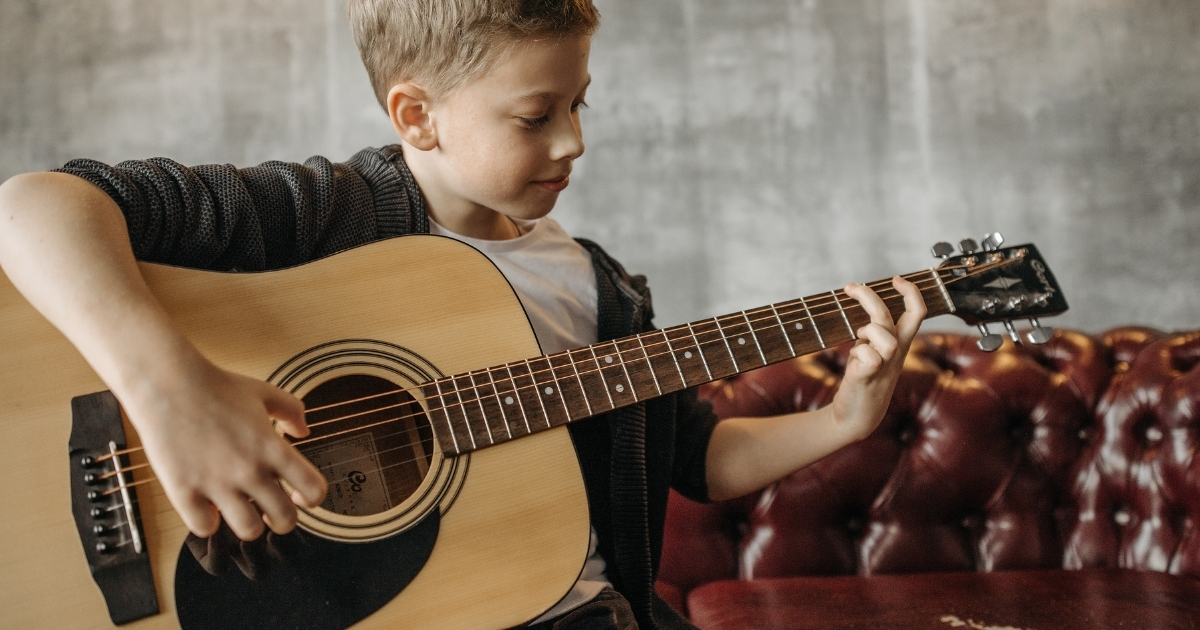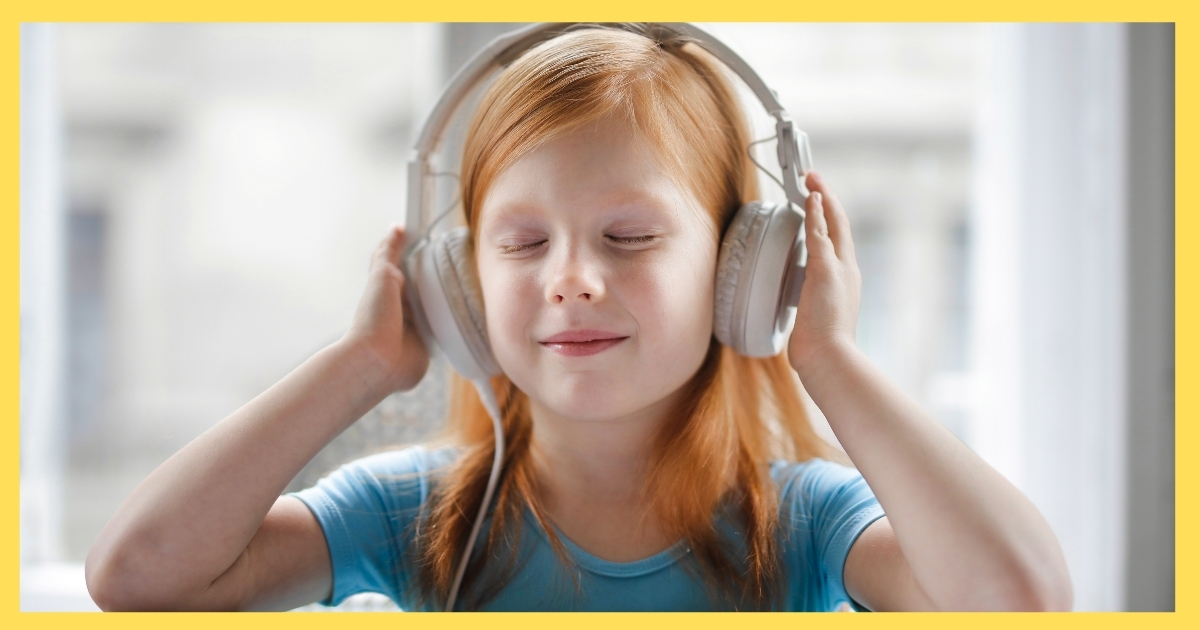Music is an incredible, enriching way to engage your child’s creativity and boost their overall development. For homeschooling parents, incorporating music education into daily routines opens up fun and engaging opportunities for kids to explore rhythm, melody, and self-expression.
Whether you’re looking to teach music actively or simply inspire an interest in it, this guide provides practical tips you can apply at home. By fostering interest through enjoyable activities and hands-on experience, you’ll be helping your child build a strong connection to music.
Create A Musical Space At Home
One of the most effective ways to introduce kids to music is by creating a home environment where music feels natural and accessible. Kids are naturally curious, and when music is woven into their day-to-day lives, it can help stimulate their interest and make learning enjoyable.
Play a Wide Range of Music
Expose your child to a variety of musical genres to spark their curiosity and broaden their minds. Building musical knowledge starts with exploration, and the more types of music your child encounters, the more opportunities they’ll find to connect with styles they enjoy.
- Classical melodies: Introduce calm, soothing pieces during study or reading times. Composers like Mozart, Bach, or Beethoven can help kids focus while stimulating their creativity.
- Energetic tunes: Play lively music to accompany activities like cleaning, dancing, or crafting. Songs with catchy beats make movement fun and show the joy music can bring.
- World music: Highlight cultural diversity by playing traditional music from various regions, such as African drumming, Indian sitar tunes, or Latin American samba rhythms.
Some streaming platforms and apps offer curated playlists specifically for kids, making it easy to provide diverse options for listening.
Make Instruments Accessible
Having instruments prominently displayed at home plants the seed for spontaneous exploration. Accessible, kid-friendly instruments encourage curiosity and give children tactile ways to experiment with sounds.
- Start with beginner-friendly options like maracas, tambourines, hand drums, or ukuleles.
- Budget-conscious families can invest in toy versions of instruments without losing educational value.
- Keep instruments in common areas where kids naturally spend their time, such as living rooms or playrooms.
The simple act of providing tools for experimentation allows children to develop their natural musical instincts while playing.
Be a Musical Role Model
Children mirror the behaviors they see, so showing your personal enjoyment of music can inspire their interest. It doesn’t matter if you’re a professional musician or someone who sings off-key—enthusiasm is contagious!
- Sing songs together during daily routines like cooking or bath time.
- Share your own favorite songs or childhood tunes that have special meaning to you.
- Play an instrument yourself, even if it’s just for fun—they’ll see it’s okay to make mistakes and just enjoy the process.
By modeling happiness and confidence in musical activities, you’ll teach your kids that music is something to be explored without fear or pressure.

Engage Kids With Hands-On Musical Activities
Music education for kids thrives on interactive, playful approaches. Rather than teaching music as an abstract subject, focus on hands-on experiences that make learning fun and relatable. Transforming lessons into activities helps build enthusiasm while introducing basic concepts effortlessly.
Weave Music Into Everyday Learning
Integrating music with other subjects can keep lessons engaging while reinforcing academic concepts. Creativity comes alive when you combine music with areas like math, science, or language arts.
- Math connections: Teach rhythms using fractions (half, quarter, or whole notes). Experiment with time signatures to practice counting and grouping.
- Explore language through music: Use rhyming songs or sing spelling words to strengthen vocabulary. Lyrics help with memorization while improving pronunciation.
- Science experiments with sound: Demonstrate pitch by plucking rubber bands stretched over boxes or study vibrations using a tuning fork and water.
By fusing music with everyday learning, students can discover how music connects to other areas of life in practical ways.
Make and Play DIY Instruments
Engaging kids in creating their own instruments is not only fun but also introduces foundational concepts about sound. Load up on household items to organize your own DIY instrument-making session.
- Rice-filled containers become shakers.
- A shoebox or tissue box acts as the base for a rubber-band guitar.
- Glass jars filled with varying amounts of water transform into a glass xylophone that teaches about pitch.
Kids can decorate their creations, combining art and music into a single hands-on project. It’s a memorable way to introduce children to instrument families and sound production while strengthening problem-solving skills.
Use Technology as a Music Tool
Modern tools like apps and online platforms have revolutionized how kids learn music. Interactive games and programs create an engaging space for kids to explore music theory while having fun.
- Explore apps like “GarageBand” for creating music or “Simply Piano” for piano tutorials. These apps often feature game-like interfaces that reward progress.
- For younger children, apps like “Baby Mozart” or “Kids Music Factory” introduce sounds and instruments in age-appropriate methods.
- Online video content, such as kid-friendly tutorial channels, provides interactive lessons on rhythms, singing, or beginner-level instruments.
Technology complements traditional learning techniques by offering an interactive approach, perfect for engaging modern learners.
Promote Imaginative Storytelling
Combine music and creativity by encouraging your kids to use soundtracks in storytelling activities. Whether it’s recreating the sound of a storm using drums or interpreting the rustle of leaves with shakers, kids love merging imagination and auditory expression.
Ask them to write a short story first and compose accompanying sounds, or propose improvisational scenarios where music tells the tale on its own. This fuels both creative thinking and hands-on music exploration.
Foster Participation Through Music-Making
Active participation is one key to making music exciting. When kids have roles to play—whether they’re humming along enthusiastically or leading a song—they feel connected and inspired. Participation blurs the line between fun and education while cultivating collaboration and confidence.
- Family sing-alongs: Singing together, even for simple nursery rhymes or karaoke, strengthens bonds and boosts memory.
- Clap along to rhythms: Drumming out beats using body percussion introduces foundational rhythm skills while keeping things playful.
- Family band nights: Set aside one evening per week to jam together. Assign each family member an instrument and rotate playing roles. Silly, spontaneous music sessions often become cherished traditions.
If you’re not musically trained, don’t worry. The goal is to foster fun and connection while encouraging kids to actively engage in the creation of music.
Introduce Formal Music Lessons
If your child shows deeper interest in music, structured lessons can take their learning to the next level. While exploration and play spark passion, developing advanced skills may eventually involve lessons in music theory or specific instruments.
Start With Age-Appropriate Lessons
Younger children benefit from casual, playful approaches rather than strict practice routines. Introduce rhythm exercises, simple note reading, or familiar songs they can master easily. Rhythm games like clapping or using drumsticks are also great for younger learners since they focus on foundational skills.
Older kids, on the other hand, may be ready for more structured instruction. Instruments like keyboards, guitars, or violins are excellent entry points. Helping them choose an instrument that excites them is crucial for maintaining long-term motivation.
Explore Teaching Resources
Parents without musical backgrounds still have many ways to facilitate music education. Accessible resources allow even homeschooling families with no prior experience to give their children high-quality musical instruction.
- YouTube provides countless beginner-level tutorials for instruments and voice training.
- Online platforms like “Outschool” host live, interactive group lessons for kids.
- Music apps and software can teach concepts ranging from piano to composition.
Whether through self-guided online resources or private tutors, customizing instruction ensures deeper engagement with whatever resonates most with your child’s interests.
Encourage Consistency
Structured learning thrives on practice and patience. Dedicate time weekly for lessons and set manageable goals. Create a lighthearted schedule—ten minutes daily will suffice for young kids. Avoid overwhelming them early on, and mix structured sessions with unstructured doodling or freestyle composition time.
Homeschooling music education is an opportunity to nurture your child’s creative development while providing essential life skills like discipline, coordination, and confidence. Whether through making homemade instruments, hosting jam sessions, or introducing formal lessons, there’s no shortage of ways to encourage musical exploration. By creating a supportive environment, offering hands-on activities, and sparking curiosity, you’ll transform your child’s early encounters with music into a lifelong appreciation filled with growth, learning, and joy.




